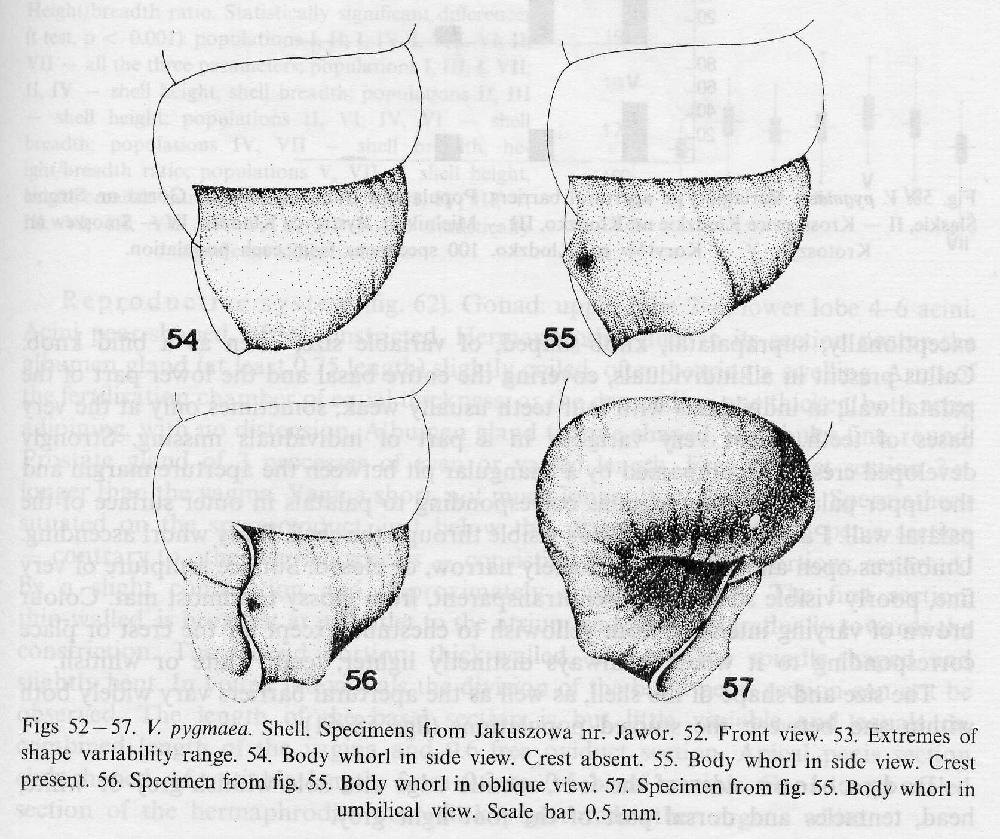
Adaptation
There are many adaptations that occur in land snails in order to be able to survive without water and in different environments. Most of these terrestrial land snails seem to stay in one place throughout their lives and their future generations. This is most likely contributed to the fact that they are slow moving and do not have a closed circulatory system instead they have an open circulatory system meaning that the heart pumps fluid across the muscles instead of through vessels. This makes them slower moving and they will not move unless needed to such as eating food or reproduction. Since the terrestrial snails do not move very much they are not distributed around the world very much.
Vertigo pygmaea has a unique set of tentacles on its head which contain eye spots at the tip of them. This is an important feature for the snail because it allows them to see light and dark places. The eye spots are not the same as human eyes however, they are not as developed and can only distinguish light and dark.
 The shell of the snail is a very important adaptation in a
terrestrial snail because it offers many advantages. The
obvious reason for having a shell would be for protection from
predators. But along with protection it helps contain water in
the organism. Since Vertigo pygmaea lives exclusively
on land it will have to adapt to the fact that there is little water
in the environment. This means if it is really hot and humid
out the snail will most likely be found tucked away in its shell to
avoid water loss because water is very important for all of the
processes of the snails life. See the
Interesting Facts section for more on the shell.
The shell of the snail is a very important adaptation in a
terrestrial snail because it offers many advantages. The
obvious reason for having a shell would be for protection from
predators. But along with protection it helps contain water in
the organism. Since Vertigo pygmaea lives exclusively
on land it will have to adapt to the fact that there is little water
in the environment. This means if it is really hot and humid
out the snail will most likely be found tucked away in its shell to
avoid water loss because water is very important for all of the
processes of the snails life. See the
Interesting Facts section for more on the shell.
Information on adaptation and shell parameters from (Francisco, et al 2011)
Next lets learn about what the snails eat in the Nutrition section.
Take me back Home!